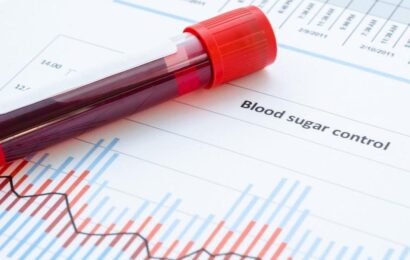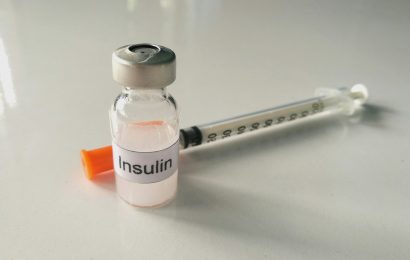One of the busiest travel — and eating — days is upon us this week.
Thanksgiving is a day for us to reflect on all the good things in our lives and of course, be thankful for them. For some, it’s also a day for overeating (too many carbs!), watching football, and perhaps sneaking in a nap. Nothing wrong with that unless Thanksgiving Day extends into Thanksgiving weekend. But whatever your plans are and whatever you eat, make sure you enjoy yourself, count your carbohydrates, check your blood glucose, and try to squeeze in a walk or two.
Sometimes people with diabetes face the holidays with a sense of impending dread. It can seem so hard to figure out portions, carbohydrates, calories, and insulin doses. And try as you might, blood glucose levels frequently run higher than you would like. Other people feel guilty for eating a piece of pie or having stuffing, mashed potatoes, and a roll. Some stick to Atkins-like meals, filling up on turkey with a few celery stalks and olives thrown in for good measure.
There’s no real right or wrong way to approach Thanksgiving. You need to find out what works best for you. However, since it’s quite common for people to overindulge somewhat on this feasting day, one recommendation I have for you is to eat breakfast Thursday morning. What? Eat more carbohydrate/calories/fat? Yes. Avoid the practice of “fasting” all morning and saving up your food allotment for the big meal.
Eat Breakfast: You’ll Be Thankful You Did
Eating a decent breakfast does a few things for you (and not just on Thanksgiving, either), including:
- Slashing your risk of obesity by up to 50%, according to the American Heart Association. How? Eating breakfast revs up your metabolism. Skipping breakfast keeps your metabolism barely idling, and sets you up for overeating later in the day (more stuffing, anyone?).
- Regulating your blood glucose (skipping any meal makes it harder to keep your glucose within its target range).
- Helping you focus and concentrate better at work, school, watching the big game…
- Cutting your risk of heart disease by helping to lower cholesterol.
- Making sure you get in your essential vitamins and minerals.
What Makes Up a Good Breakfast?
I realize that for a lot of people, the thought of eating breakfast is a big turn-off. It’s hard enough to stumble out of bed and grab some coffee, let alone sit down and actually eat something. No one is saying you need to stop at the nearest breakfast buffet. The goal is to eat something nutritious — even if it’s not your typical breakfast food. After all, the first meal of the day isn’t called breakfast for nothing.
It’s also completely understandable that time is of the essence in the morning. Most of us are rushing off to work or school or helping kids/spouses get off to work or school, so a quick and easy breakfast is what will work best. Maybe getting up 10 or 15 minutes earlier will give you the time you need to eat something. Getting food ready the night before can help, too. There are no rules about what to eat, but a healthful breakfast includes the following:
- Whole grains. Skip the process, refined, sugary flour stuff as much as possible.
- Heart-healthy protein and fat. Reduced-fat cheese or 1% milkfat cottage cheese, boiled eggs, peanut or almond butter, turkey breast, salmon, tofu, lean ham.
- Fruit. Try to forgo the juice and reach for the whole fruit instead. This will give you more fiber and less of an impact on your blood glucose. Not a big fruit eater? Vegetables will work, too.
- Low-fat dairy or soy. Skim or low-fat milk or yogurt, or low-fat soy milk.
Why all these foods? No one food gives you all of the nutrients that you need. And eating just carbohydrate for breakfast means that your blood glucose may spike higher than you want a few hours later and then dip down. You’re also likely to feel hungrier, sooner. Carbohydrates give you energy, but foods with protein and fat have staying power. Fruits and veggies give you vitamins, minerals, antioxidants, and fiber that your standard multivitamin pill doesn’t quite measure up to.
Need Ideas? Check These Out:
- Toasted whole-grain bread spread with almond butter and pear slices on top.
- Cooked oatmeal (skip the sugary, salty, instant kind) with soy milk, chopped almonds, and blueberries. Don’t forget the cinnamon.
- Greek-style yogurt (high in protein) with your favorite bran cereal and some raisins stirred in.
- Whole wheat tortilla stuffed with scrambled eggs cooked with chopped veggies.
- Vegetarian sausage patty or links with a slice of reduced-fat cheese served on a toasted whole-grain English muffin (who needs that Egg McMuffin, anyway?)
- Toasted whole-grain frozen waffle spread with peanut butter and all-fruit spread (or try apple butter).
- Breakfast smoothie made from milk or soy milk, frozen berries, peanut or almond butter, and some flaxseed thrown in for good measure.
Happy Thanksgiving!




